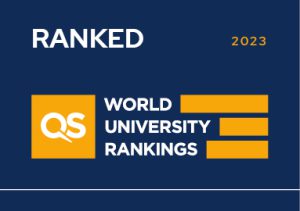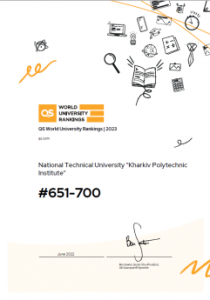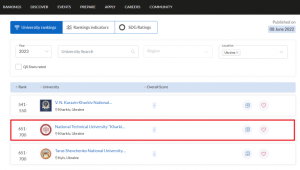NTU “Kharkiv Polytechnic Institute” improved its indicators and took the 2nd place among Ukrainian higher education institutions in the QS World University Ranking 2023. In 10 years of participation of Kharkiv Polytechnic Institute in the ranking, this is the highest result. In the general list, it has a position of 651-700. Thus, KhPI confirms the title of the best technical university of Ukraine for the fourth year in a row.
In total, more than 1,400 universities from all over the world were included in this year’s ranking, eleven of them are Ukrainian.
The Ukrainian TOP-5 looks like this:
541-550 – KhNU named after V.N. Karazin,
651-700 – NTU “KhPI”,
651-700 – KNU named after T. Shevchenko,
701-750 – NTUU “KPI named after I. Sikorsky”,
801-1000 – NU “Lviv Polytechnic”.
So, this year KhPI was in the first half (46%) of the world’s best universities ranked in the ranking. In general, during this time, the KhPI improved its indicators in the world almost twice, without ever losing its positions (from 2014 to 2018 it was ranked 701-750, and from 2019 – 651-700). None of the Ukrainian universities participating in the ranking was able to do this, the organizers of QS report. We will remind you that in the previous QS Word University Ranking 2022 NTU “KhPI” occupied the 3rd position among Ukrainian higher education institutions.
The first places in the general ranking of the QS World University Ranking 2023 are occupied by universities in the United States and Great Britain: Massachusetts Institute of Technology, Cambridge, Stanford, Oxford and Harvard universities.
Information:
QS World University Rankings is the most popular ranking of universities in the world, designed for the convenience of students.
The rating takes into account six key indicators: academic reputation (40% of the assessment), reputation among employers (10%), the ratio of the number of students and the scientific and pedagogical staff of the university (in smaller groups, higher quality teaching) (20%), citation of scientific works in Scopus
(20%), the share of foreign students and teachers (5% and 5%, respectively).



